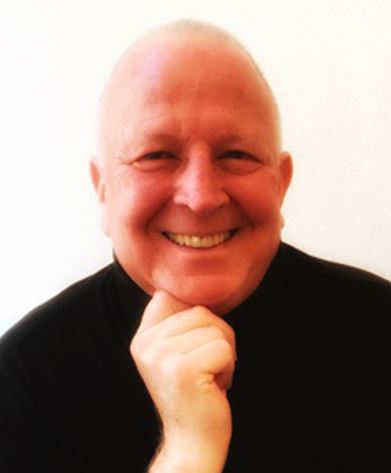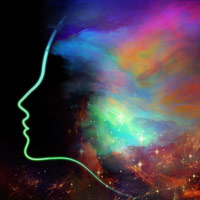Transparency

Storytelling at Work is honored to publish the following first-person story by Barbara Bash about an extraordinary moment she experienced in the company of her teacher, Chogyam Trungpa.
In 1980 I was 32 years old living in Boulder Colorado, teaching calligraphy and book arts at Naropa University and working as a freelance calligraphic designer.
I was also deeply involved in the world of Chogyam Trungpa, a Tibetan Buddhist teacher who had arrived in North America ten years earlier and gathered a lively and diverse community around him.
During the spring of that year, I traveled to the Bay Area to assist in a Dharma Art seminar that Trungpa was offering in San Francisco. There would be a number of creative events happening -- poetry readings, art and music performances and environmental installations. Since I had lived in Berkeley during the 1970's, I had old friends in the area and it felt like a kind of return.
At one of the large public talks I had been asked to assist Trungpa with a demonstration of calligraphy. He would create spontaneous brush strokes during the talk to illustrate his teachings and these strokes would be shown with an overhead projector onto the large screen on the stage.
The hall where this was taking place was in downtown San Francisco. It had been built around the turn of the century and was decorated with antique sconces, patterned walls and carpet and held over 800 people. I had invited some of my friends from Berkeley to attend. This would be their first experience of the man who had become my spiritual teacher.
During the afternoon of the event I went out to gather the supplies for the calligraphy session. I had been told that Rinpoche (an honorific title) would be bringing his own brushes. I needed to buy a bottle of Japanese sumi ink (made from the soot of pinewood, animal glue and perfume) and a number of clear acetate sheets that would take the ink well.
I had received no instruction as to how many sheets would be needed. I decided to buy 25. That seemed like more than enough.
In the late afternoon I returned to the place I was staying and got dressed for the evening, putting on a simple blue dress with a few colorful images of parrots embedded in the deep tone of the fabric. The man I was staying with, an inventive letterpress printer I had recently become enamored with, decided at the last minute not to accompany me to the event, so I headed out on my own.
When I arrived at the hall the large room was empty and I went back stage to set up. When my preparations were complete I sat down in the back to wait.
I had been told that Rinpoche had arrived and was in a private room somewhere in the building. At one point his personal attendant came over
to me and said quietly, "He's in a very unusual state this evening."
I nodded, but had no idea what that meant.
I did know that Rinpoche was an unpredictable person, sometimes arriving hours late for a talk, sitting down in front of an audience and saying nothing, or engaging people in spontaneous exchanges of poetry and song that sometimes took wild turns.
Taking in this current report, I decided all I could do was hold steady and watch for cues of what was needed. Staying precise and contained seemed like the safest approach.
As the hall began to fill up I moved to the front of the stage, placing the bowl of ink on the table to the right of Rinpoche's chair. This table also held the overhead projector. His attendant brought out the Japanese brushes and brush holder and I arranged it all so he could reach them easily. I put a large flat cushion on the floor to the right of the table. This is where I would sit. I placed the stack of acetate sheets close to me on the floor.
By this time the hall had filled up and people were chatting and anticipating Rinpoche's arrival. Everything was ready.
 I knelt on the cushion, Japanese style, with my legs folded under me. I looked out at the audience and noted that the friends I had invited were sitting in the front row. I smiled at them and they smiled back.
I knelt on the cushion, Japanese style, with my legs folded under me. I looked out at the audience and noted that the friends I had invited were sitting in the front row. I smiled at them and they smiled back.
I waited, my eyes cast down, listening. And then I heard the sound of footsteps approaching. There was an uneven and recognizable rhythm to those steps. Rinpoche walked with a strong limp because of an auto accident 15 years earlier that had left one side of his body paralyzed. He always had an attendant walking along side supporting his weight and holding his arm firmly.
They crossed the stage together and he sat down slowly in the chair.
He carried a Japanese fan in one hand which he put on the table. A glass of sake and a napkin was also added to the table. Rinpoche studied the whole arrangement and then slowly turned and looked out. There was something dense, immovable and quiet about his presence, his body, the space around him. The audience was silent. He turned his head towards me slightly. I made a small bow.
The evening began.
I don't remember what he spoke about at the beginning. My attention was so focused on when I would need to move into action. Eventually that happened. Rinpoche turned to me and indicated that he was ready and I placed an acetate sheet on the projector's flat surface.
He picked up a brush, dipped it in the ink, gently wiping the excess off on the edge of the bowl, and slowly lifted it over the acetate, pausing for a moment and then landing, sliding, making a smooth elegant mark on the slippery surface. He turned his head to see the image projected on the big screen and smiled. After some moments he indicated for me to remove it and I carried the wet glistening sheet to an open space on the floor and placed a new sheet on the projector surface. Things were underway.
At some point Rinpoche began to speak about not trusting one's innate worth, of being embarrassed by who we are. He made a dense overlapping stroke that nearly blackened the entire sheet. Laying down the brush he turned back to the mark and said "Looking at what I've done, I feel so ashamed."
As he spoke these words he reached out and wiped his hand in the wet ink, then softly slapped his cheek, drawing his hand across his mouth and leaving a large swath of blackness behind. There was an intake of shock and then laughter in the room. But I froze. I had not seen this coming.
I didn't know what to do. Should I get up, find a paper towel, wipe his face, clean him up? Should I pretend it hadn't happened, just carry on? A long moment passed. My precision, my carefulness became solidified. I sat there, eyes down, doing nothing, in front of everyone.
Then I heard footsteps. Osel Tendzin (Thomas Rich, Rinpoche's successor and dharma heir) arrived with a paper towel, bent down and gently wiped his teacher's face clean.
The evening continued.
Rinpoche engaged the audience that night in ways I'd never seen before, entering into lively dialogue with individuals, calling them out with intensity and delight. The energy was alive, compelling, confusing, wild. He was playing with the space and everyone in it.
At one point he invited people to come up on the stage and make a brushstroke and I remember one fierce young Italian women who brushed out a huge NO! as her personal expression to the world. I was moving quickly, catching and laying out more and more inked sheets on the floor. At one point I glanced out at my friends in the front row. They looked to be in shock.
Eventually the evening began to move towards a close and Rinpoche announced that we would end by singing the Shambhala Anthem together. The singing began -- In heaven the turquoise dragon thunders -- his high voice leading the chorus.
As the song rolled along, he speeded up his brushstrokes, creating a calligraphic expression for each line. At one moment he was moving so quickly I didn't get the new sheet of acetate down before his brush landed and the ink went onto the plastic surface. I jumped up, grabbed the napkin from the table, wiped the panel clean and placed a new sheet. There was no hesitation. I was riding the energy and knew what to do.
But now I'm watching the stack of acetate sheets dropping lower and lower. The singing went on and the brushstrokes continued, fast and wet and bright. As the last line was sung I placed the last sheet on the projector surface. The final stroke was made. The song was done.
Much later that evening I returned to the apartment where my companion was waiting.
"How did it go?" he asked.
I looked at him and said, "It was unusual, hard to describe."
I realized at that moment we had nothing in common anymore. And as I got undressed I saw that my blue dress had been sprayed with delicate black stars.
Barbara's website
Barbara's blog
Posted by Mitch Ditkoff at 08:29 AM | Comments (1)
January 01, 2023Five New Year Resolutions from a Very Wise Soul

My good friend, Stevie Ray McHugh, author of You Are God Enough and channeler of a wise soul named "Aion", asked for some guidance a few days ago re: New Year's resolutions. Here is the answer he received:
First, resolve to evolve. Stay more present by slowing down. This shift in perception enables you to stop the world and your egoic mind, allowing you to resonate in Higher Self even more frequently. This sets you firmly on the path of evolution in consciousness.
Second, share the stories of your struggles and realizations about soul integration. Sharing stories is an act of generosity and humility. The more you connect with others on the path, the more joy you will experience.
Third, act on your guidance even more closely in everything you do, think, say and feel. This requires the courage to trust in Spirit and transform into an even more fully integrated being. Embody the courage to create and recreate yourself, your life and your perception of the Real.
Fourth, let go of the habitual, egoic identifications that cause fear, anger, doubt or self-recrimination. Commit to letting go of who you think you are. Dance with the unknown. Explore deeper, wider and higher frequencies to fully embody the emergence of the new you, rising like a phoenix from the flames.
And fifth, radiate love and light. Be a beacon of light and forgiveness blessing all souls. Expand the love in your heart and radiate it outward in all directions and dimensions. This adds to the tsunami of love rippling across the multiverse, uplifting all souls and continuing the evolution consciousness Itself. You are that already. So be it.
Posted by Mitch Ditkoff at 09:53 AM | Comments (0)













